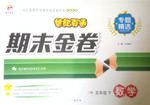题目内容
PART THREE: READING COMPREHENSION
Directions: Read the following three passages. Each passage is followed by several questions or unfinished statements. For each of them there are 4 choices marked A, B, C and D. Choose the one that fits best according to the information given in the passage.
A
At dawn on Friday, May 19, 1780, farmers in New England stopped to wonder at the pink color of the sun. By noon the sky had darkened to midnight blackness, causing Americans, still in the painful struggle of a prolonged war of independence, to light candles and tremble at thoughts of the Last Judgment. As the birds quieted and no storm accompanied the darkness, men and women crowded into churches, where one minister commented that “The people were very attentive.” John Greenleaf Whittier later wrote that “Men prayed, and women wept; all ears grew sharp . . .”
A recent study of researchers, led by Richard Guyette from the University of Missouri’s Tree Ring Laboratory, has shown that vast forest fires in the Algonquin Highlands of southern Ontario and elsewhere in Canada brought this event upon New England. The scientists have discovered “fire scars” on the rings for that year, left when the heat of a wildfire has killed a part of a tree’s cambium (形成层). Evidence collected also points to a drought that year. An easterly wind and low barometric pressure (低气压) helped force smoke into the upper atmosphere. “The record fits pretty close,” says Guyette. “We had the right fuel, the drought. The conditions were all there.”
Lacking the ability to communicate quickly over long distances, Americans in 1780 remained in the dark about the event, which had disappeared by the next day. Over the next several months, the papers carried heated debates about what brought the darkness. Some were the voices of angry prediction, such as one Massachusetts farmer who wrote, “Oh! Backsliding New-England, attend now to the things which belong to your peace before they are forever hid from your eyes.” Others gave different answers. One stated that a “flaming star” had passed between the earth and the sun. Ash, argued another commentator. The debate, carried on throughout New England, where there were no scientific journals or academies yet, reflected an unfolding culture of scientific enquiry already sweeping the Western world, a revolution nearly as influential as the war for independence from the English.
New Englanders would not soon forget that dark day; it lived on in folklore, poems, and sermons for generations.
56. New Englanders crowded into churches because they were frightened by .
A. the pink color of the sun B. the darkened sky at daytime
C. the Last Judgment on Friday D. the American War of Independence
57. What can we infer about the event in New England on May 19, 1780?
A. Prayers remained silent and attentive.
B. Night birds no longer came out to sing.
C. People’s ears became sharper than usual.
D. Midday meals were served by candlelight.
58. According to the researchers, the origin of the event was .
A. an east wind B. a severe drought
C. some burning fuel D. low barometric pressure
59. What can we know about the debates after the dark day?
A. They focused on causes of the event.
B. They swept throughout the Western world.
C. They were organized by scientific institutions.
D. They improved Americans’ ability to communicate.
60. What can be the best title for the text?
A. New England’s dark day. B. Voices of angry prediction.
C. There is no smoke without fire. D. Tree rings and scientific discovery.
56--60 BDBAA

 世纪百通期末金卷系列答案
世纪百通期末金卷系列答案